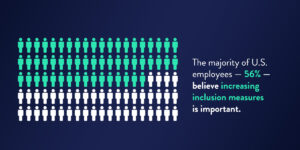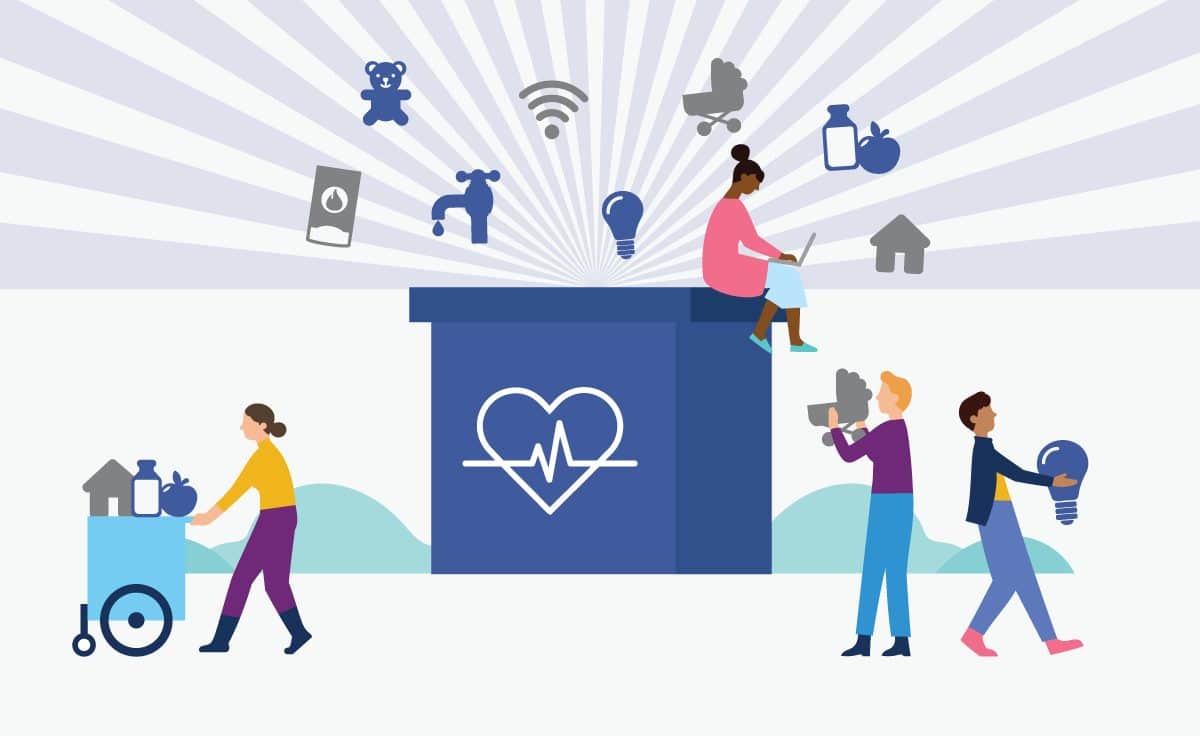Top Employee Benefits Trends Shaping 2025

Over the past several years, the employee benefits market has changed in vast ways — and 2025 will be no different. Following the trends means you can offer your team the benefits they prioritize most. With the right employee benefits plan, you can support employee health, happiness and satisfaction, giving them the tools they need to thrive and stay part of your workforce.
Discover some of the top employee benefits trends below to build a resilient workforce in the coming year.
Making Healthcare More Affordable
According to various different trends, United States healthcare costs are expected to rise in 2025 — and employer healthcare spending is anticipated to jump nearly 8%. As insurance expenses become more overwhelming for individuals and their families, maintaining healthy lifestyles is difficult and has compounding effects on the rest of their lives, including their jobs. At the same time, it’ll be a priority for employers to figure out how to minimize costs while maximizing benefits for their teams.
Still, the core of any successful business is a healthy workforce, and bearing the rising costs of healthcare — instead of passing them along to employees — is likely in companies’ best interests. When staff members are physically and mentally thriving, they’re happy, productive, focused and determined. As a result, both team members and the business as a whole benefit.
With the right resources at work, employees can better afford and manage all the care that goes into preventing and treating health issues. By offering low-cost, accessible and comprehensive insurance options to your employees, you provide them with those tools. Plus, you show them you care about their continual wellbeing.
If you’re thinking about revamping your healthcare offerings, consider a few ideas:
- Specialty drug management: Through strategies like formulary exclusions, step therapy and direct manufacturer contracts, you can manage specialty drug management expenses. Additionally, you can implement programs encouraging biosimilars to reduce dependency on expensive biologics.
- Telehealth and virtual care: Offering options for telehealth can help you save on infrastructure and in-person costs. A comprehensive virtual care program can also help meet increased employee demand for behavioral health services.
- Data-driven decision-making: Use advanced analytics to identify high-cost claimants early so you can target interventions for chronic conditions and prevent catastrophic claims. With data-driven insights as part of their strategies, employers have reported 10%-15% reductions in total healthcare spend.
- Value-based care models: Consider redesigning your health plans to include high-performance networks, narrow provider options and tiered benefit structures that reward cost-efficient care. Note that transitioning from fee-for-service to value-based care incentivizes providers for positive health outcomes rather than service volume.
- Focus on health advocacy: Investing in health advocacy services allows you and your employees to better navigate healthcare systems and reduce unnecessary costs. These services can be combined with wellness programs to maximize engagement and outcomes.
Emphasizing Inclusive Practices
Employers are moving to adopt specific plans and insurance policies that support the inclusion of different employee needs.

The majority of U.S. employees — 56% — believe increasing inclusion measures is important. Beyond minimizing bias in recruitment and hiring strategies and investing in training for leadership, you can transform your strategy to make a tangible impact. Some examples of inclusive benefits policies to explore include:
- Enhancing family-focused benefits, such as parental or family leave, surrogacy benefits, child care cost savings, caregiver benefits and family planning support
- Broadening time-off allowances to accommodate employees celebrating various holidays and cultural events
- Maintaining support for diverse work accommodations, such as remote and hybrid work options
Focusing on More Than Physical Health
The total health and wellness of your employees is a critical focus point. While health insurance plans are greatly beneficial for your team, you want to ensure they aren’t only focused on physical health. At the same time, you can provide wellbeing programs and policies that support your workforce.
For many reasons, employees may deal with mental health issues that impact both their personal and work lives. Between diseases like depression and instances of work-induced burnout, any one of your team members may be struggling. When you invest the appropriate funds and resources to support your employees’ mental health, you help them thrive.
Here are some mental wellness areas employers are prioritizing in 2025:
- Providing access to professional teletherapy and virtual counseling sessions
- Creating employee assistance programs team members can use for personal resources and support
- Hosting stress management and financial wellness workshops with industry experts
Offering Personalized Benefits Plans
The most innovative employee benefits are personalized to each team member. For many businesses, plans can benefit from including personalized options that consider each employee’s top interests and concerns. This level of customization appeals to your current workforce, showing you’re continuously thinking about their needs, and it also attracts new talent, especially individuals who are part of younger generations.
With a personalized approach to benefits in 2025, you can be at the forefront of implementing a creative strategy many industry experts are calling the future of benefits. But before you start compiling your options, you’ll need to understand what your workforce is looking for in the first place. These key steps can help guide you:
- Start researching: What do your employees value most when it comes to benefits? Try conducting a current benefits audit and sending out a survey to your team. If the data shows clear areas where you could introduce new options or rework existing offerings, you’ll have a better understanding of how to build your new customized plan.
- Determine what “personalized” means: For most companies, personalized benefits include a selection of voluntary benefits or services discounted by the employer. This approach means employees get access to traditional benefits, and they can also decide to take part in additional benefits that align with their needs. The central point here is emphasizing choice.
- Select the right benefits: Depending on your business, work-life benefits may be a focus, or professional development perks could be more helpful. Based on your research and data collection, determine what your team values most. Use that information to find and implement unique, interesting and practical personalized benefits.
- Communicate with your team: Put together a clear and accessible communications plan that describes your new benefits offerings. This plan should tell employees which benefits are available, the advantages of each new option, and how they can enroll and participate. The goal is to ensure employees are informed and educated, improving benefits plan participation.
Reach out to Exude, Inc. for Experienced Benefits Consulting
Is your organization looking to transform its employee benefits plan design in 2025? Considering the most recent trends is an effective place to start, and Exude, Inc. can help you decide on the most impactful benefits options to support your team. With our 24/7, high-touch service model, we assist various businesses in supporting their workforces as an experienced benefits consulting firm.
It’s no secret that the people in your company are its most important asset. Together, we can build a thorough, personalized employee benefits plan that truly meets your team’s needs and supports their wellbeing. Let us help you create a benefits plan that supports your workforce’s success — learn more about our consulting approach today, and contact us to get started!


